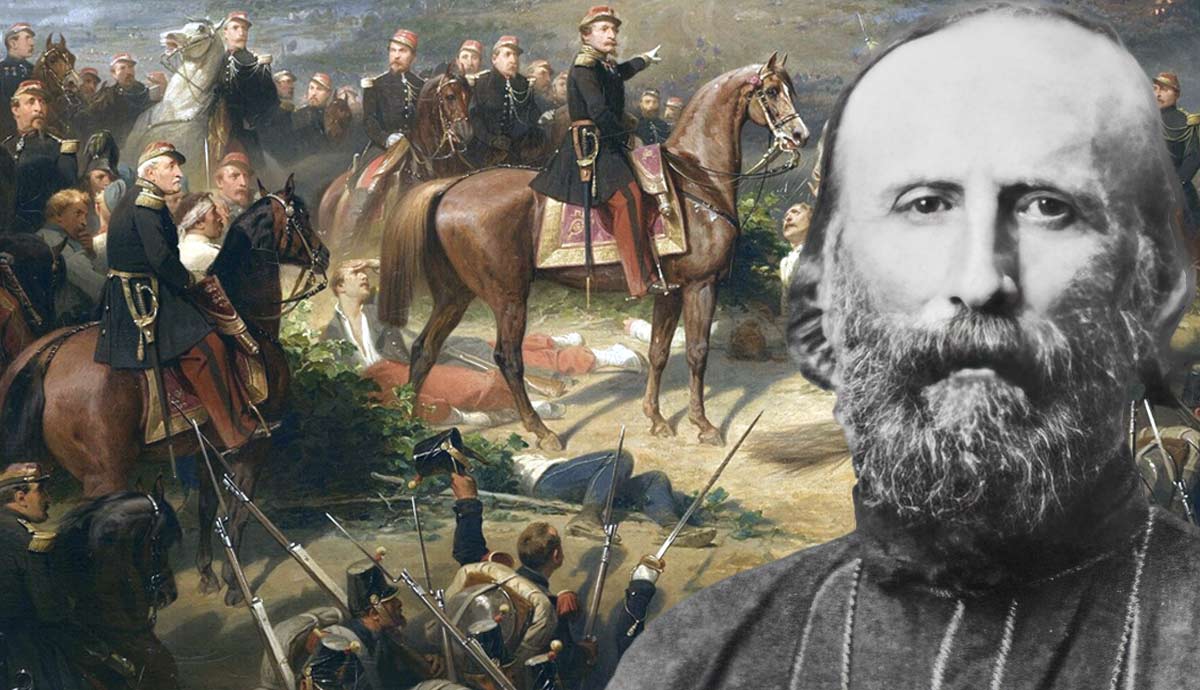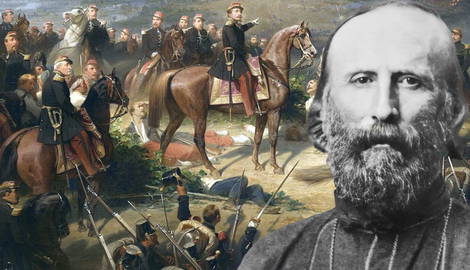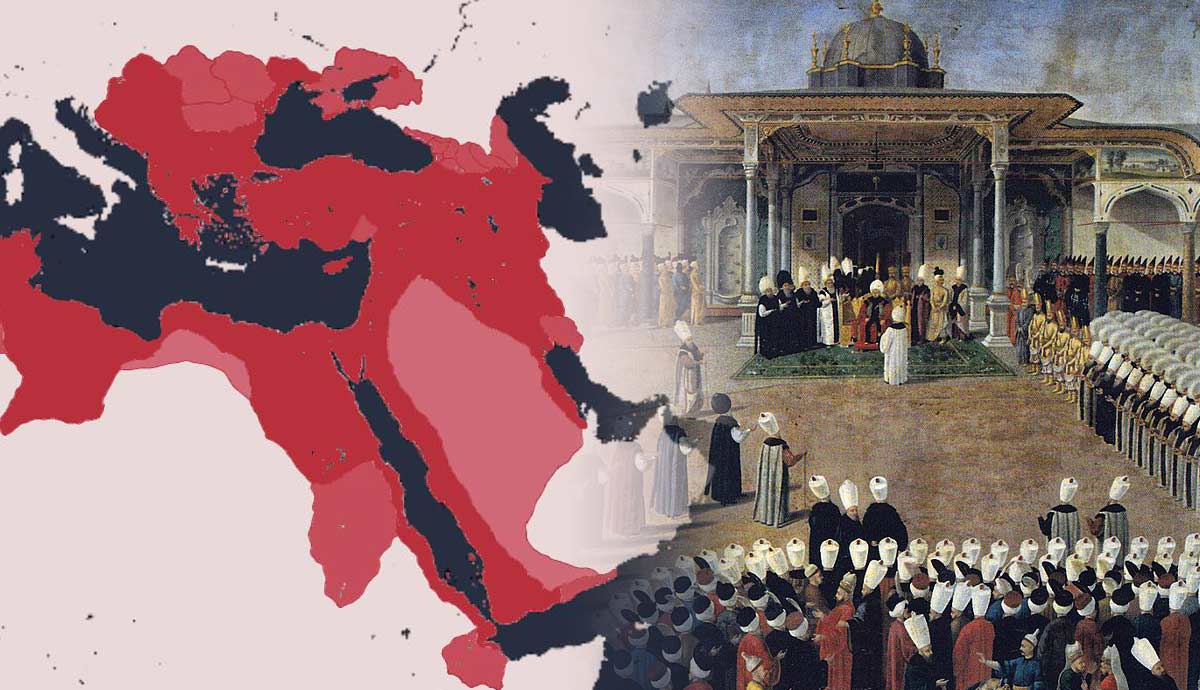
Risorgimento is the term used to explain how Italy emerged as a unified country in the mid-19th century. The word Risorgimento refers to a resurrection or revival. Indeed, Italian nationalists called for a rediscovery of Italy’s rich past—from the Roman Empire to the Renaissance. But no single state existed in the Italian peninsula since the fall of the Roman Empire in the West in the 5th century. That would change with the French Revolutionary Wars’ outbreak in the 1790s. The northern Italian kingdom of Piedmont would also emerge as a driving force for unification.
Origins

Two major questions dominated the struggle for Italian unification. For starters, how would the patchwork of states across the Italian peninsula unite into a single country? What type of government would be created? Some called for a loose confederation of the existing states. But by the early 19th century, leading nationalists debated the merits of a republican government or a monarchy. Finally, what role, if any, would the papacy have in this new Italy? At the time, the pope was the spiritual head of the Roman Catholic Church and ruler over the Papal States, which stretched across much of central and southern Italy.
Moreover, how would this unified Italy unite people on a cultural, social, and economic level? For Italian nationalists, this became a more difficult challenge than politically unifying the country. As one nationalist leader, Massimo d’Azeglio, put it, “We have to give thought to forming Italians if we wish to have an Italy.”
The story of Italian unification begins with the French Revolution. But it would take many twists and unexpected turns before a unified Italian state appeared on the map of Europe in the 1860s.
From Revolution to Restoration

At the start of the French Revolution, the Italian peninsula comprised ten states. They were a collection of kingdoms, duchies, republics, a grand duchy, and the Papal states. Napoleon would change the map of Italy beginning in 1796.
At the head of the French Revolutionary Army of Italy, a young Napoleon Bonaparte defeated the Austrians and their Piedmontese allies in northern Italy. By 1799, the French had set up republics in Italy from Milan to Naples. However, with political turmoil brewing in France and Napoleon-occupied Egypt, these Italian republics fell before an Austrian, Russian, and Neapolitan invasion.
However, Napoleon quickly restored French dominance in Italy with his victory over the Austrians at Marengo in June 1800.
The French then established a northern Italian Republic in 1802. This became the Kingdom of Italy in 1805. French control extended to Naples, where the Bourbon royals were driven out of their kingdom. Napoleon’s older brother Joseph became the Neapolitan king until he was sent to take the Spanish throne in 1808. Naples fell to Napoleon’s brother-in-law, Marshal Joachim Murat.
Napoleon’s defeat and the 1814-1815 Congress of Vienna paved the way for the return of the Italian rulers deposed by the French. No restored monarch did more to try and reverse the Napoleonic reforms than Piedmont’s King Victor Emanuel I.
Early Uprisings

Piedmont became a hotbed of revolutionary activity as the restored monarch met heavy opposition to his plan to eliminate all French reforms. Revolution was also in the air in southern Italy. King Murat in Naples desperately sought to save his throne from France’s enemies. Murat had distanced himself from Napoleon to convince Austria and Britain that he could be part of post-Napoleonic Europe’s future.
But Napoleon’s enemies, like Austria, preferred a Bourbon return to Naples. Murat tried to start an Italian war of independence against Austria to save his throne. Unfortunately for Murat, his appeal to Italians did not prevent his version of Waterloo at the Battle of Tolentino in May 1815. He was later executed for attempting to reclaim his lost throne.
Austria was thus the dominant power in post-Napoleonic Italy. Led by its foreign minister and later chancellor, Prince Metternich, Austria and other powers like Britain and Russia sought to prevent further revolutionary troubles in Europe. Conditions across Europe in the 1820s and 1830s showed that this was a challenge for those like Metternich, who had opposed the French Revolution and Napoleonic reforms.
Various Italian revolutionary groups and societies were inspired by uprisings in Spain, Greece, and France during the 1820s and 1830s. However, few conspiracies ever materialized, and many were killed, imprisoned, or forced into exile. But these failures did launch the careers of Italian nationalist leaders Giuseppe Mazzini and Giuseppe Garibaldi.
The Revolutions of 1848

The conservative and reactionary Europe orchestrated by Metternich in the aftermath of Napoleon’s defeat crumbled in 1848-49. Bowing to popular pressure, rulers across Europe issued constitutions and promised reforms. There were uprisings across Italy. Rulers in northern and central Italy, like Leopold II of Tuscany and Piedmont’s King Charles Albert, granted constitutions in February and March 1848. Charles Albert sensed an opportunity to create a Kingdom of Northern Italy by annexing cities from Milan to Venice that were currently in rebellion against the Austrians.
Even Pope Pius IX promised a part-lay government in the Papal States. But in these revolutionary times across Europe, actions trumped promises. In Rome, papal rule was replaced by a republic. Both Mazzini and Garibaldi played prominent roles in the Roman Republic.
At first, things seemed to be going well for Italian nationalists. Milan successfully resisted five days of fierce Austrian attacks led by Marshal Joseph Radetsky. Other Italian rulers felt pressure to join the war on Austria. The rulers of Tuscany and Naples (now called the Kingdom of the Two Sicilies) briefly supported Venice. Italian unification seemed close to realization.
Reactionary Resurgence

But then the tide changed. First, fighting between Neapolitan troops and republicans in Naples sapped King Ferdinand Charles’ enthusiasm for reform and anti-Austrian activity. Meanwhile, Radetsky’s Austrian forces regrouped and routed Piedmontese troops under King Charles Albert at Custoza in July 1848. Charles Albert agreed to an armistice that also meant the Austrian recapture of Milan.
However, Charles Albert broke his truce with Austria and fought Radetsky again in March 1849. Once again, Radetsky crushed the Piedmontese, and Charles Albert abdicated in favor of his son, Victor Emmanuel II. The new monarch staved off pressure by keeping the liberal constitution granted by his father and declaring his public support for Italian unification.
Radetsky mopped up republican resistance across Italy in 1849. After crushing revolts in Tuscany in April 1849, only Rome and Venice held out. That would change by the late summer of 1849. Despite Garibaldi’s heroic efforts, French troops helped restore Pius IX in Rome. Garibaldi and Mazzini both managed to escape into exile. Many others were not as fortunate and were executed by papal or Austrian authorities.
Piedmont Takes the Lead

While the revolutions of 1848-49 were crushed, the same could not be said of Italian patriotism and the cause of unification. Piedmont recovered throughout the 1850s from the embarrassment of defeat and Charles Albert’s abdication. This was largely thanks to Prime Minister Count Camillo Benso di Cavour.
Cavour modernized Piedmont’s economy and fostered close ties to France’s new emperor, Napoleon III.
Napoleon III admired Italy and envisioned an expanded Piedmont as a solid ally. However, he did not want a unified Italian state to come into existence for fear it would rival France. Nor did Cavour wish to see a unified Italy if it was dominated by radical revolutionaries.
In 1858, Napoleon III and Cavour secretly set plans to provoke a war with Austria to gain territory for Piedmont. In return, Napoleon III demanded Piedmont cede territory in the form of Nice and Savoy.
French troops aided by Piedmontese forces beat the Austrians in the battles of Magenta and Solferino in June 1859. The bloody fighting at Magenta gave a name to the color.
Historian Richard J. Evans points out that the Battle of Solferino was the last in world history where reigning monarchs commanded opposing armies. Napoleon III proved a better general than Austrian Emperor Franz Joseph. Moreover, the plight of wounded soldiers that day moved a Swiss observer, Henri Dunant, to return to Geneva and create the International Red Cross.
Garibaldi’s Expedition & The Kingdom of Italy

But then Napoleon III shocked Cavour by reaching a separate agreement with Austria. Moreover, France’s acquisition of Nice and Savoy sparked a backlash against Napoleon III and Cavour. For example, Garibaldi was enraged that Piedmont would cede his native city of Nice to the French.
Piedmont had been enlarged as northern Italian cities voted to join the kingdom. However, the sudden pause in the conflict also created the danger of escalation as many volunteers flocked to Garibaldi to continue the fight.
Garibaldi seized the initiative. He sailed in May 1860 with his now legendary 1,000 volunteers from outside Genoa to Marsala, Sicily. The island was in the midst of social upheaval against the Bourbon government. Garibaldi and his followers saw the opportunity to unite the Italian peninsula without waiting for Cavour’s diplomacy.
In a stunning campaign that caught the world’s attention, Garibaldi crushed Bourbon resistance and paved the way for southern Italy’s union with the growing Piedmontese kingdom. Most of central and southern Italy had voted to join Piedmont by November 1860.
In early 1861, elections were held to form the first Italian parliament. Victor Emanuel II became King of Italy in March 1861. Despite the situation moving beyond his control, Cavour had successfully channeled the power of Italian nationalism into maintaining the established social and political order. But Cavour died suddenly in June 1861. The institutions he helped build in Piedmont now governed most of the peninsula.
An Unfinished Revolution?

Victor Emmanuel’s kingdom did not yet encompass the entire Italian peninsula. In 1866, Italy received Venice and the Veneto region as a diplomatic payoff for backing Prussian Chancellor Otto von Bismarck’s war against Austria.
Moreover, Rome remained under papal control. Garibaldi led multiple unsuccessful efforts to seize Rome in the 1860s. However, the revolutionary leader faced opposition from the Italian government.
Italy’s leaders feared Piedmont’s former ally, French emperor Napoleon III, who supported papal control of Rome. Historian Chris Duggan explains that while Napoleon III was happy to see an enlarged Piedmont, he feared a unified Italy as a potential rival to France. However, French defeats in the Franco-Prussian War paved the way for Italy’s conquest of Rome.
Italian troops breached Rome’s formidable walls and seized the city on September 20, 1870. Papal rule had ended, but Pope Pius IX refused to recognize the Italian state. By mid-1871, Italy’s government transferred to Rome, making the city the country’s capital.
However, many Italian nationalists did not believe the Risorgimento’s full promise had been achieved. Many were disillusioned with the type of government the previous decade had created. Other nationalists also advocated for further territorial annexations. But the fledgling Italian state’s most significant challenge involved uniting the people of northern and southern Italy. All these factors would play a role in Italy’s history.










